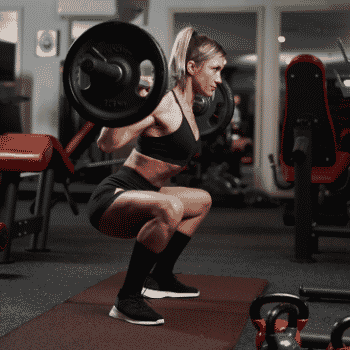Are you curious about beginner weight-lifting routines? Suppose you’re starting at the gym. It will give you intensity, regularity, and endurance you’ve never experienced before in beginner weight-lifting routines. The trouble with fitness experts talking about “hard work,” “habit,” and “discipline” is that they never specify what they mean. What is the actual hard work that produces results? Many individuals work incredibly hard yet adopt poor tactics and eventually give up on fitness.

How Long Should I Complete the Exercise as a Beginner?
Make it a goal to stick with a fitness plan for three months. Developing a long-term workout program creates beneficial habits, allowing your mind and body to acclimate to a new activity. Each training session should last 45 minutes to an hour, and you should always rest and recuperate for 48 hours between sessions. A Monday-Wednesday-Friday schedule works nicely.
What Are the Advantages of Weight Lifting for Beginners?
Weight lifting for beginners has several advantages. The most important of them is that it aids in developing muscular strength and growth. “Stress on the muscles from pulling or pushing weights generates micro-tears in the muscle fibers, which repair and become stronger and bigger, and that’s how you gain strength.” While weight lifting might help beginners gain strength, it produces more toned muscles.
How Can Beginners Make Working Out a Habit?
Setting a realistic target for how often you’ll begin working out each week might keep you from burning out. In addition, aiming for a bit of movement each day will help you develop a tendency to work out, even when you’re not completing training. For example, a 10-minute stroll or a series of stretches would suffice.
Determining when you’ll work out is another vital issue. Again, there is no one-size-fits-all solution, but looking at your calendar carefully will help you determine when to plan your exercise. For example, planning early workouts may be counterproductive if your mornings are very busy with many last-minute adjustments. In such an instance, an afternoon or evening session may be more likely to be completed on time.
Prioritize Forms for Beginner Weight Lifting Routines
All beginners should devote their first few weeks to improving techniques. Choose a weight for each exercise that is too light for you and concentrate on learning and using the proper method. Getting your workout technique correct when you’re a novice is critical, so ensure you do. When you feel your form needs to be on every exercise, concentrate on lifting more weight while maintaining that excellent form.
Set Goals for Beginner Weight Lifting Routines
Do you want to develop strength, bulk up, or improve your endurance? Decide what you want to achieve and build a plan to achieve it. To gain strength and bulk, stick to heavyweights, short repetitions, and extra rest between sets. Lighter weights, more repetitions, and less rest between sets are better for endurance.

Avoid these Common Errors for Beginner Weight Lifting Routines
Use too much weight too early; always begin with lesser importance than you expect lifting and slowly increase that initial exercise. If your form worsens due to swinging the weight or relying on momentum, you are lifting too much weight. In addition, increased speed raises the risk of injury and lowers the efficacy of the target muscle group.
Not using enough weight; be always cautious, but if you can complete 30 repetitions with a weight, it’s probably time to go up a notch. Increase the weight slowly, only 5% at a time.
Lifting weights too rapidly, completing repetitions too quickly; there is no benefit to lifting weights too quickly. Weight lifting for beginners slowly and deliberately produces greater muscular tension and force, more muscle fiber activation, and less tissue stress.
How to Progress to Classic Lifts for Beginner Weight Lifting Routines
Begin your weightlifting journey with compound movements. Every program should include the bench press, squats, deadlifts, and shoulder press. These lifts are great for working for multiple muscle groups and saving time. If you are new to working out, start with modifying each lift.
For example, with the bench press, start with pushups, a bodyweight exercise, and once you master them, move to the chest press, a machine exercise. The pushups and chest press will help you learn perfect form while acclimating your chest and supporting muscles to resistance training. Not only that, but these exercises will help you understand your body as far as your limits and potential are concerned. Once you master them, move on to the standard flat bench press for free weight and the incline and decline bench press.
Next, do the same with the squat. Start with bodyweight lunges and squats. Next, do machine squats and leg presses. Finally, move on to squats. You can do the same with the shoulder press and deadlifts by using bodyweight exercises like pull-ups and inverted back rows. Again, start with a bodyweight modification and then move to a machine weight modification before you advance to a free weight exercise.
The Last Word on Beginner Weightlifting Routines
First, let’s discuss the importance of rest days. Your muscles need time to repair themselves and grow after a workout. Also, it is essential not to do weight lifting every day because you will overtrain your muscles, which delays muscle growth. By following bodybuilding principles, you will reach your fitness goals faster.
Remember that your diet must also support your workout to get the most benefits from these routines by eating nutritious foods with plenty of protein-rich food sources like eggs or lean cuts of meat. What has been your experience with exercise? Have any tips on how beginners should start working out? Let us know in the comments below!




